Color Space: How to Elegantly Express Colors Using Numbers?
Color space is a concept you may be familiar with regarding color grading and management.
A straightforward example is when you save a photo in photo editing software and notice a change in its colors. This could be due to an issue with the color space settings.
If you want to understand what color space is all about, keep reading. In this article, we will provide you with the answers you're seeking.

In this article, you will learn:
- What Is Color Space?
- What's the Difference Between Adobe RGB and sRGB?
- How to Set the Color Space in Photoshop?
- How to Avoid Color Shifts When Converting Color Spaces?
- Final Thoughts About Color Space
What Is Color Space?
The collection of colors that our eyes can perceive is referred to as "visible colors." But how do we accurately describe these colors? The best way is to use mathematical methods to eliminate any ambiguity.
When we talk about "color space", we are referring to a mathematical model that represents colors, allowing us to express them numerically.
You can think of color space as a mathematical formula. However, just like a single formula cannot fit all scenarios, the same goes for color space. There are numerous color spaces depending on different situations.
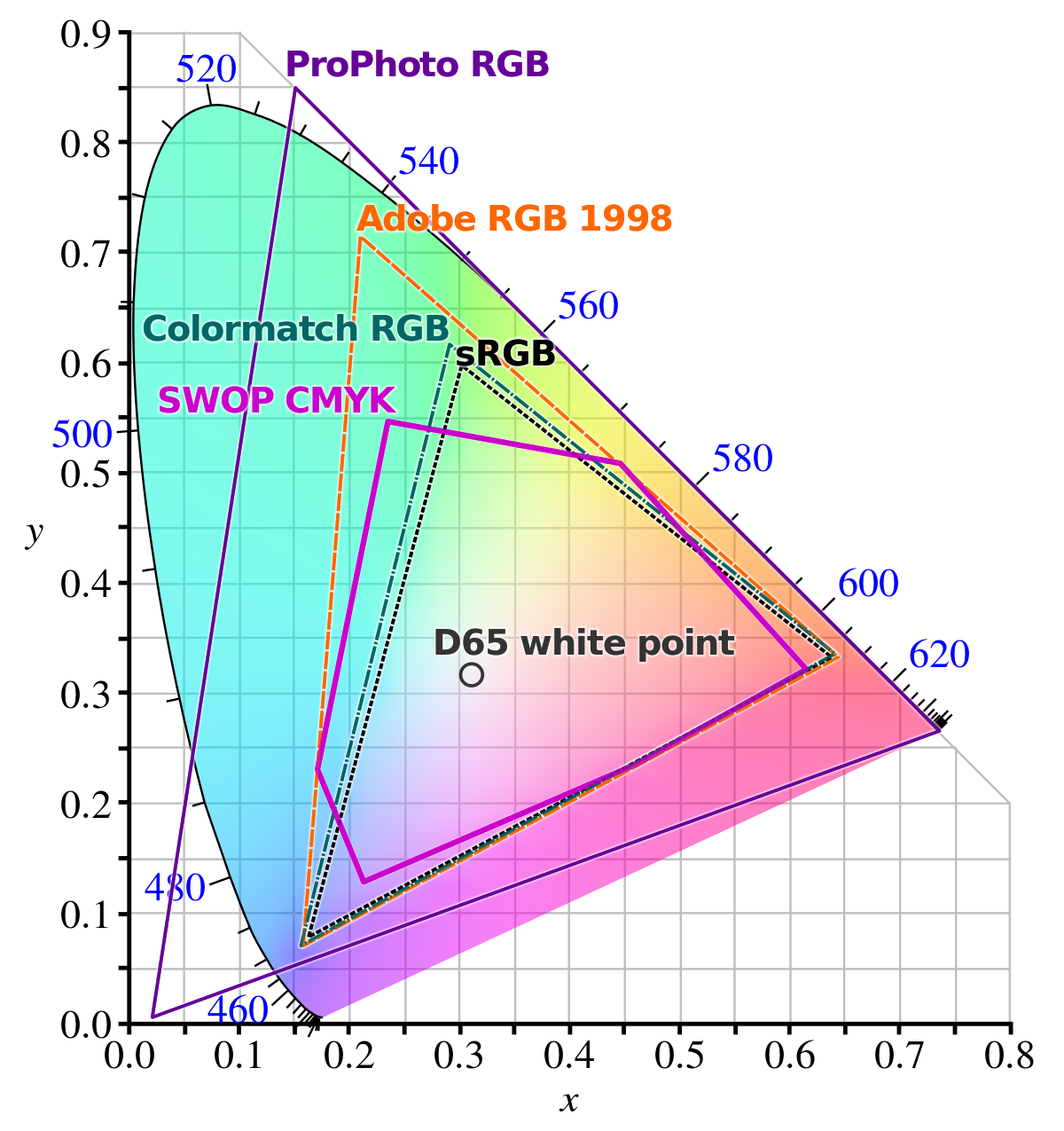
Different color standards exist for color spaces. For example, the CMYK color space is used in printing, the HSB color space is based on hue, saturation, and brightness, while the RGB color space describes colors based on red, green, and blue components.
Color space enables you to locate a color using a set of numerical values precisely. With these values, colors can be standardized.
Let's take a digital camera as an example. It uses the RGB color space because the image sensor in most digital cameras can perceive red, green, and blue light in the environment, ultimately producing a color.
In this RGB color space, which is a three-color formula, a color is described by the amounts of red, green, and blue it contains.
In other words, to describe a color, you only need three numbers. All values range from 0 to 255, arranged in the order of RGB. These values represent the "intensity" of each color, not the brightness.
For instance, the numerical value for pure red is (255, 0, 0), indicating the absence of green and blue. On the other hand, (30, 150, 150) suggests a small amount of red with approximately equal amounts of green and blue, resulting in a different color combination.
When using the "Color Picker" in Photoshop, you'll notice that after entering RGB values, corresponding HSB, CMYK, and Lab values are displayed. This indicates that these formulas can represent the same color.
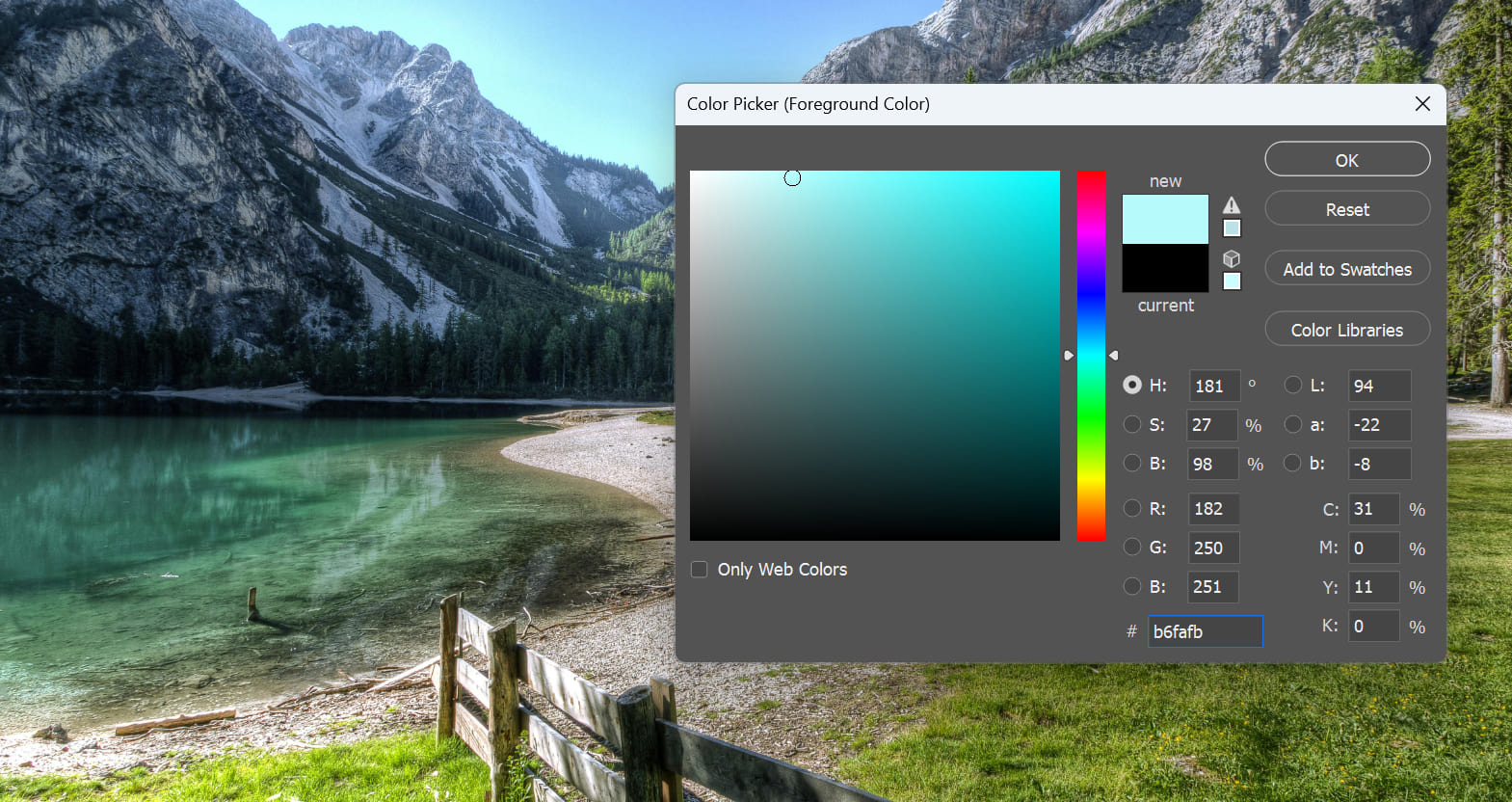
What Is the Difference Between Color Space and Color Gamut?
"Color gamut" refers to the percentage of colors within a specific "color space" that can be displayed by a device. On the other hand, color space is a method of defining colors using abstract numerical values.
For example, if a monitor has a color gamut of 90% sRGB, the range of colors it can display occupies 90% of the sRGB color space. In the same color space, a monitor with a higher color gamut can display a wider range of colors.
You may adjust numerous parameter sliders when using image editing software like Photoshop. However, using a mouse to drag those sliders and tweak the values may not be precise or efficient.
That's where TourBox, a creative tool beloved by photographers and digital artists, comes into play. TourBox simplifies every step of your photo editing process, providing an exceptional user experience that makes you feel like you're using your hands to make adjustments.

Check out our photo editing page to learn more about TourBox and its capabilities.
What's the Difference Between Adobe RGB and sRGB?
RGB color space is probably the most common color space you've come across. However, RGB itself can be further divided into various types, and for photography enthusiasts, the most common ones are Adobe RGB and sRGB.
So, what's the difference between these two RGB color spaces?
1. sRGB
- Birth Year: 1996
- Advantages: High universality and adaptability, good red color display
- Disadvantages: Limited color gamut, poor display of blues and greens, not suitable for printing
sRGB stands for "standard RGB." It is the color space used for web images (including the majority of iPhone displays) and smartphone screens.
This color space was established in 1996 as a collaboration between Microsoft and Hewlett-Packard. It was designed as a safe color space specifically for internet images and display performance.
Wherever you see "www" on the internet, you'll encounter sRGB. If you're uploading images to the web (including social media platforms), or viewing them on your phone, sRGB is almost the only choice you have.
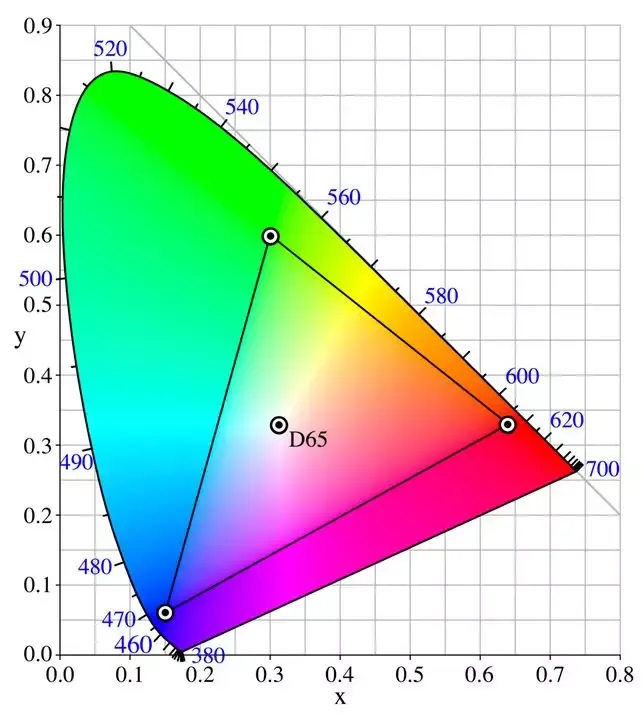
2. Adobe RGB
- Birth Year: 1998
- Advantages: Covers the CMYK color space, making it printer-friendly. Excellent display of blue and green shades on wide-gamut monitors that support Adobe RGB.
- Disadvantages: Limited adoption due to Adobe's less dominant position compared to Microsoft, making it difficult to popularize on the internet.
Adobe RGB is a color space introduced by Adobe specifically for the printing industry. Since sRGB has significant differences from printer colors, it's challenging to preview print results using sRGB color space.
However, Adobe RGB can closely match the output of CMYK printing, achieving a "what you see is what you get" effect for print.

3. Summary
Looking at the color space diagram below, you'll notice that Adobe RGB performs significantly better than sRGB in the blue, cyan, and green areas.
Therefore, if you have a wide-gamut display that supports Adobe RGB, viewing photos with these color tones (using professional software) will yield excellent results.
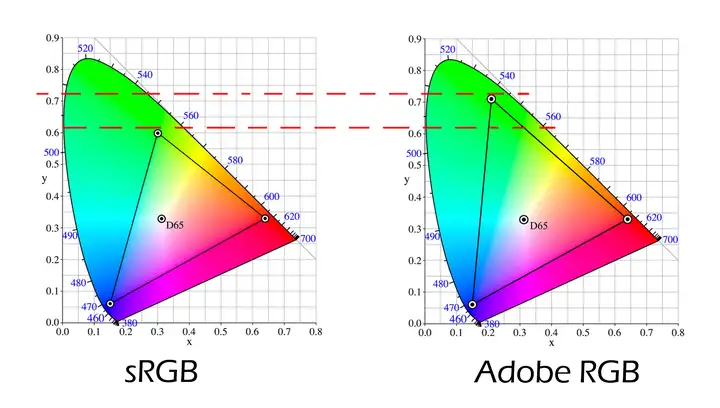
Some professional websites now support Adobe RGB color space, but it requires browser compatibility, system support, hardware support, and other complexities.
As a result, the widespread adoption of Adobe RGB is challenging. Now it is mostly used for viewing photos on computers.
In summary, Adobe RGB has a larger color gamut and is suitable for printing/professional use, while sRGB has a smaller color gamut but enjoys broad compatibility.
If you have a photo that needs to be printed and shared online, it's recommended to keep separate copies in both color spaces after processing them appropriately!
How to Set the Color Space in Photoshop?
When it comes to working with photos in Photoshop, how do you set the color space? First, you need to understand that Photoshop is a software designed for computer displays, so it primarily uses the RGB color space.
If you want to switch between sRGB and Adobe RGB, you can do so by following these steps in the top menu bar of Photoshop: "Edit" > "Color Settings." The shortcut is "Command/Ctrl + Shift + K". This will bring up the Color Settings panel.
In the Color Settings panel, you'll see four sections under "Working Spaces": RGB, CMYK, Gray, and Spot.

In most cases, you won't encounter CMYK or Spot colors, and Gray is rarely used. So, you only need to consider whether your RGB setting should be Adobe RGB or sRGB.
When working with photos, you can quickly change the color space through the "Image > Mode" menu in the top menu bar of Photoshop. In most cases, you'll be working with the RGB Color option here.
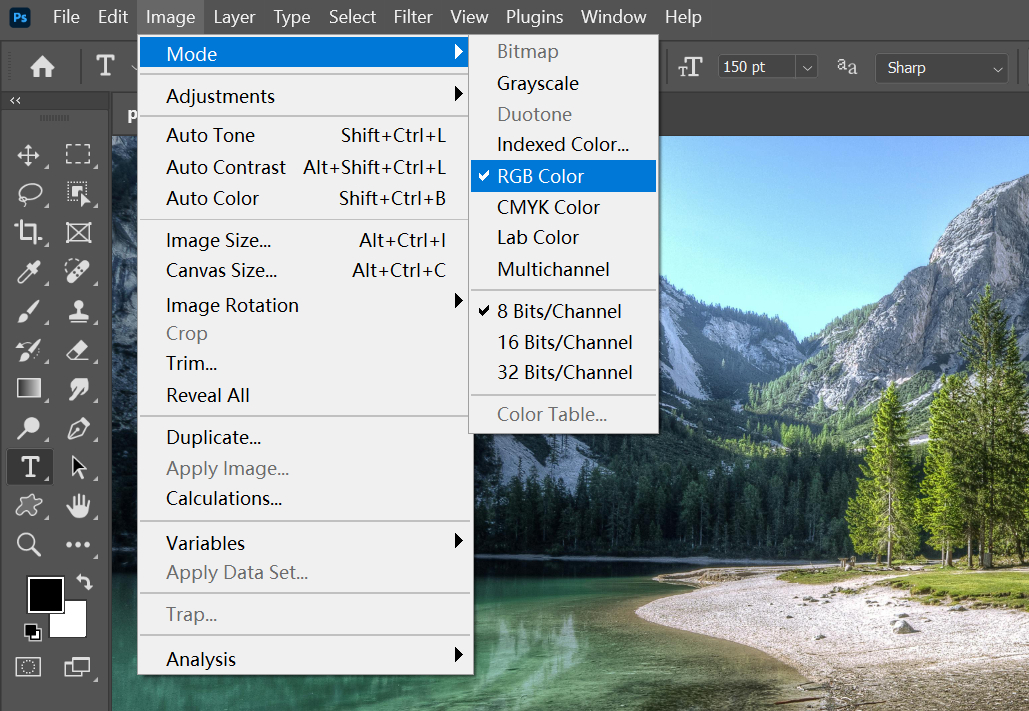
How to Avoid Color Shifts When Converting Color Spaces?
Unfortunately, the answer to this question is that it is impossible to completely avoid color shifts.
Different color spaces may not accurately depict the same colors, as they have different ranges of coverage. This is not an intentional obstacle set by developers and researchers but rather a result of the differences in the descriptive mediums.
For example, digital cameras describe colors using the RGB color space because their imaging principles are based on RGB. On the other hand, printers use the CMYK color space for printing photos, following the four-color separation process of CMYK.
So, if you want to print a photo, you'll encounter a step called "converting the color space." The computer needs to find a specific color in the RGB world and then convert it to CMYK for printing.
Even if you're not printing, if your photo is in the Adobe RGB color space and you upload it to the internet or transfer it to a phone, webpages and phones typically support sRGB, requiring the conversion of Adobe RGB to sRGB.
During this process, several issues can arise:
- Error in the conversion or inability to convert a particular color accurately due to differences in color gamut, resulting in a substituted similar color and introducing deviations.
- Errors during communication (printing, ink, browsers, websites) after the conversion. Since Adobe RGB has a noticeably stronger display capability for blue and green compared to sRGB, viewing photos with these color tones, particularly in browsers like Internet Explorer, can result in noticeable color shifts.
- Deviations in the output devices (phone screens, computer monitors, printed paper) during display.
With so many layers of uncertainty, even experienced color experts with top-notch equipment can only try to minimize these deviations.
Color shifts cannot be completely avoided, but what you can do is select the correct color space during output, choose the appropriate operations and high-quality imaging devices, and ensure minimal color deviations.
Final Thoughts About Color Space
In reality, color space is not complicated. It's essentially a mathematical problem. It allows you to describe colors and quickly find a specific color using numerical values.
Regarding photo editing, you must consider the color space setting based on your intended use. If you're sharing the photo on the internet, use sRGB. If you plan on printing it, go for Adobe RGB.
That concludes our article on color space. Our main goal was to share some insights about color spaces, and we hope it has been helpful to you!
Product Recommendation:
If you're interested in TourBox, why not start with the TourBox Lite? It offers great value for money, making it perfect for users who are new to TourBox.
